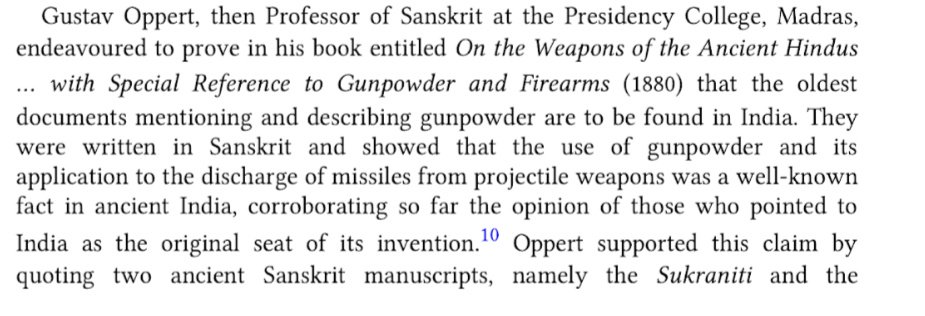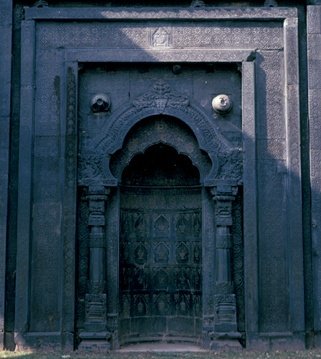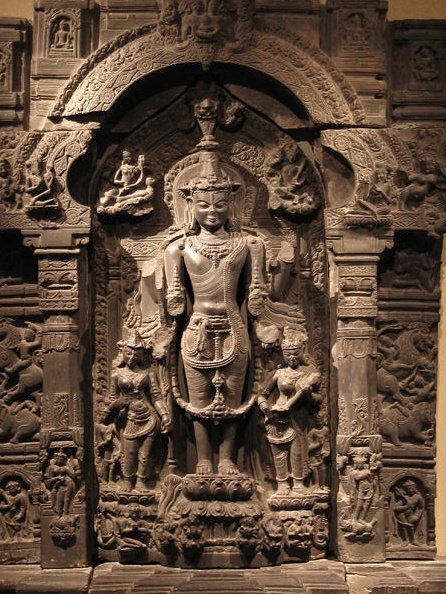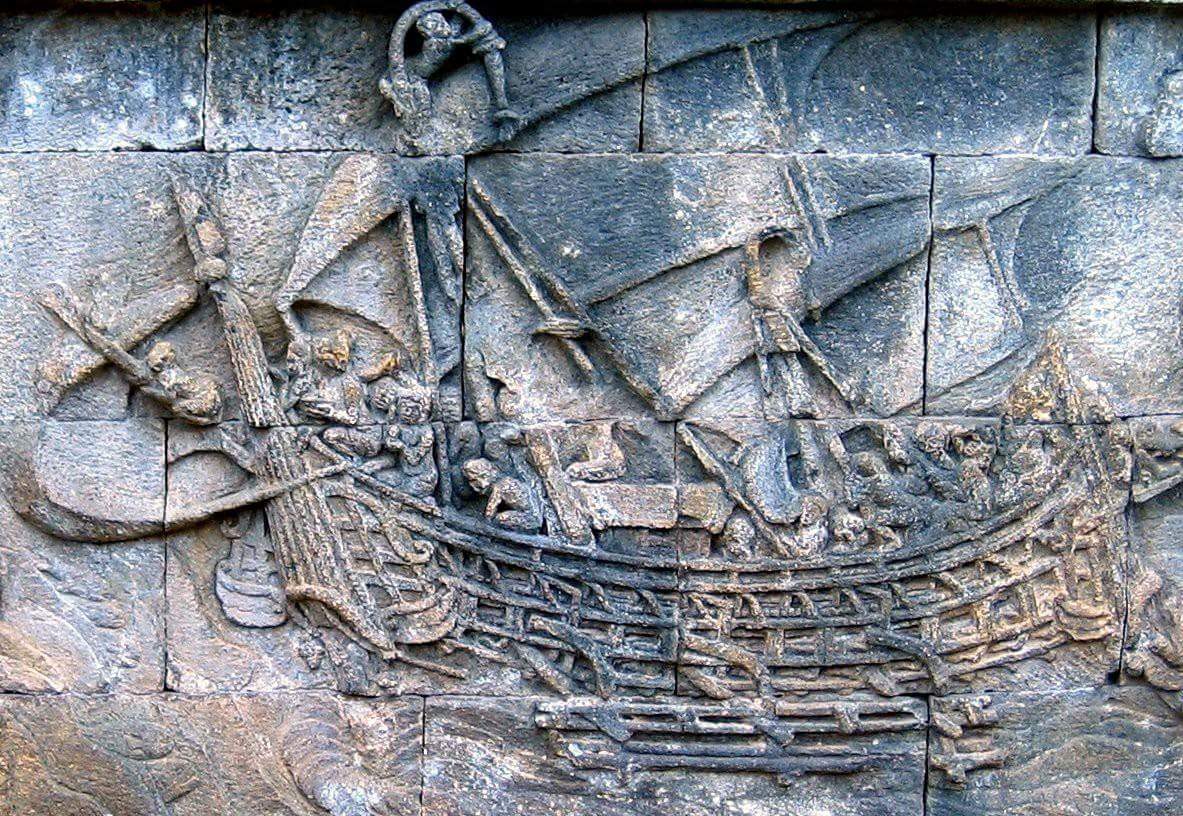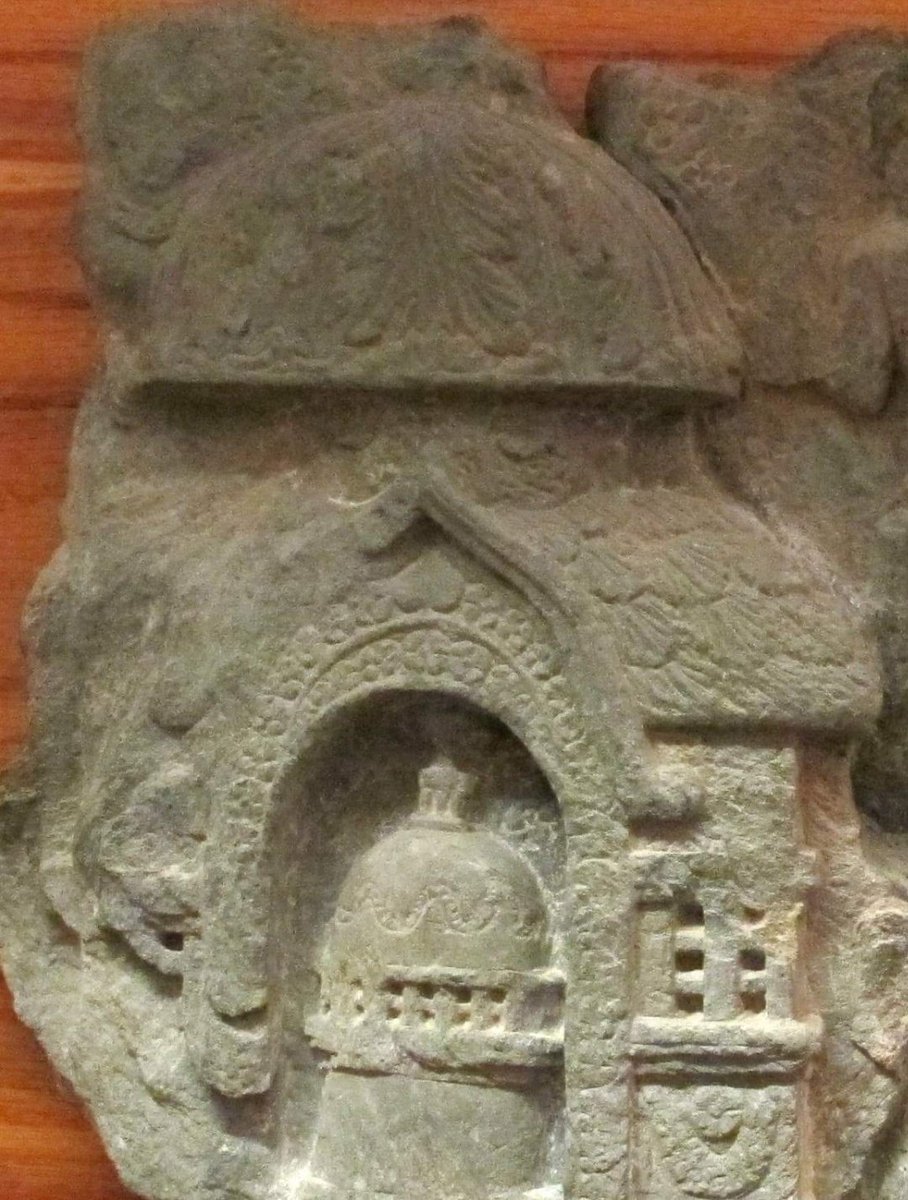Amazing Kalyani(Temple tank) at Hulikere near Halebidu(Karnataka)
Dated: ~12th century CE
Note the details of aedicula. Fractal pattern is obvious.
#ReclaimTemples #WalkToTemple
Dated: ~12th century CE
Note the details of aedicula. Fractal pattern is obvious.
#ReclaimTemples #WalkToTemple
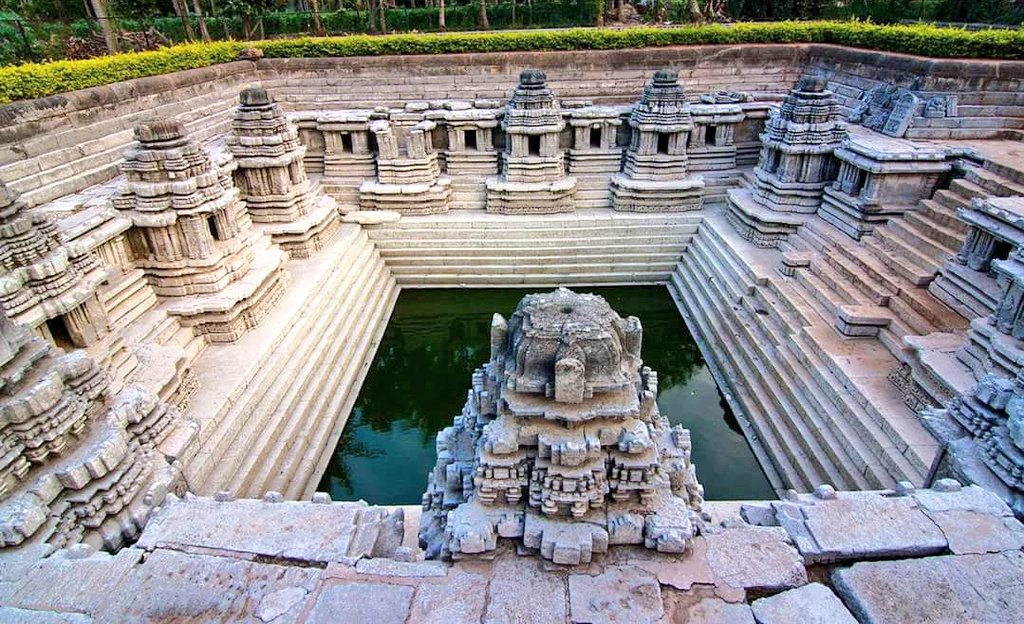
Chand Baori stepwell, Abhaneri ,Rajasthan
Dated: ~9th Century CE
The four sided 13 storied stepwell is over 100feet deep and lined with over 3500steps with an amazing geometrical precision. This stepwell is one of the largest stepwells, a magnificent device to store water.
Dated: ~9th Century CE
The four sided 13 storied stepwell is over 100feet deep and lined with over 3500steps with an amazing geometrical precision. This stepwell is one of the largest stepwells, a magnificent device to store water.

A large stepwell and temples, Bundi(Rajasthan)
Anda(dome) surmounted by Kalasha forms the Shikhara of temple.
It is known as Dabhai Kund. Currently filled with dogshit and garbage. It is maintained by ASI.
Anda(dome) surmounted by Kalasha forms the Shikhara of temple.
It is known as Dabhai Kund. Currently filled with dogshit and garbage. It is maintained by ASI.

Aqueducts of SahasraLinga Talao, Gujrat
Dated: ~11th century CE
It was functional till some point in 17th century CE. Mesmerizing combination of art and hydrolic engineering!
Dated: ~11th century CE
It was functional till some point in 17th century CE. Mesmerizing combination of art and hydrolic engineering!
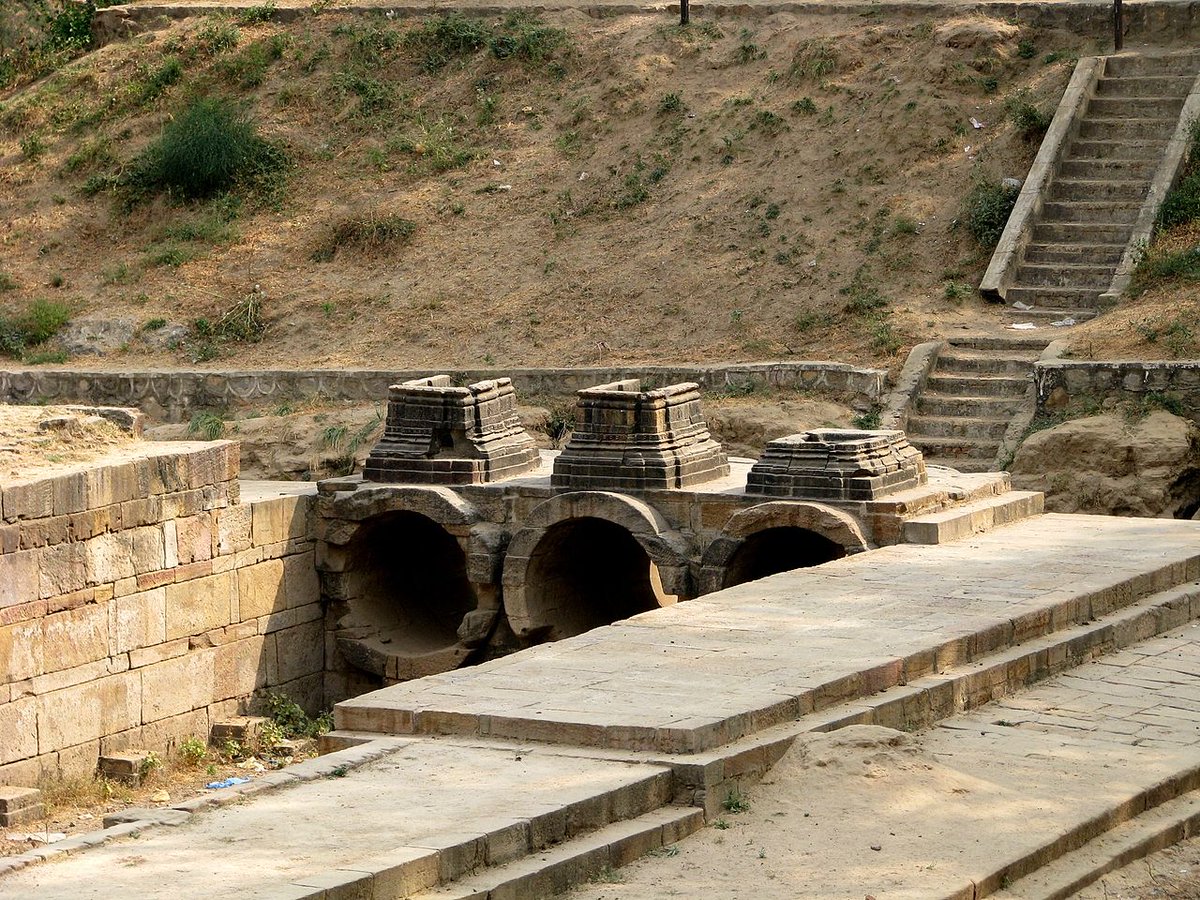
Towards the western end there is a rudra kupa in which water from the river Saraswati was collected and then allowed to pass into the inlet channel of the Sahastralinga Tank. This cistern is about forty meters in diameter. 

Remains of pavilion and aqueducts, SahasraLinga Talao
Near the middle of the eastern embankment are the remains of the old Siva temple, comprising the basements of the pavilions together with a colonnade of forty eight pillars; it was in good condition till 16th century.
Near the middle of the eastern embankment are the remains of the old Siva temple, comprising the basements of the pavilions together with a colonnade of forty eight pillars; it was in good condition till 16th century.

Stepped pond of Sun temple, Modhera
Dated: ~11th century CE
This huge pond measures 53.6*36.6m². This pond is geometrically more complex for it utilized fractal pattern.
Note ornately carved Shikhara. Imagine the beauty of sight with exquisite temples reflected in Kunda!
Dated: ~11th century CE
This huge pond measures 53.6*36.6m². This pond is geometrically more complex for it utilized fractal pattern.
Note ornately carved Shikhara. Imagine the beauty of sight with exquisite temples reflected in Kunda!

Perspective!
Surya Kunda, Sun Temple, Modhera(Gujrat)
Dated: ~11th century CE
Just note the scale of construction! Tropic of cancer pass through this temple complex.
Surya Kunda, Sun Temple, Modhera(Gujrat)
Dated: ~11th century CE
Just note the scale of construction! Tropic of cancer pass through this temple complex.
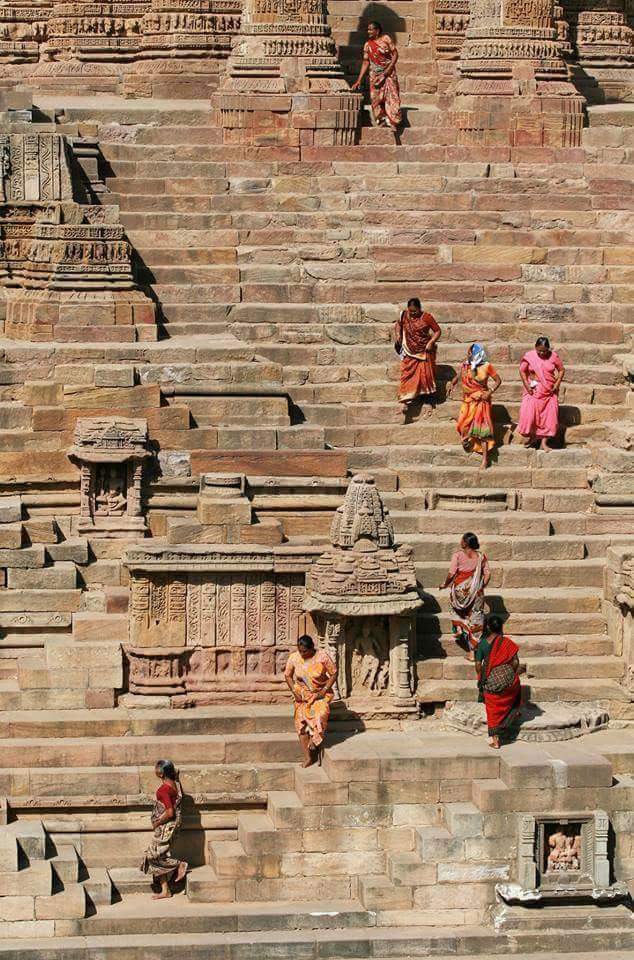
One more from same SuryaKunda, Sun Temple, Modhera(Gujrat)
Dated: ~11th century CE
Note the scale of construction! This temple is result of perfection in geometry and astronomy. Sun rays illuminate the sanctum on the days of equinoxes.
Dated: ~11th century CE
Note the scale of construction! This temple is result of perfection in geometry and astronomy. Sun rays illuminate the sanctum on the days of equinoxes.

Kalyani(Temple pond) of ancient BhogaNandishwara Temple, Nandi Hills, Karnataka
Note amazing symmetry!
Cloister lined with elaborate Makara Arch niche runs around this Kalyani. History of stepped ponds can be traced back to Sindhu-Saraswati valley civilization.
Note amazing symmetry!
Cloister lined with elaborate Makara Arch niche runs around this Kalyani. History of stepped ponds can be traced back to Sindhu-Saraswati valley civilization.

Raniji ki Baodi(Queen's Stepwell), Bundi
Dated: 17th century CE
The stepwell also served as temple for miniature shrines are carved depicting Dashavatara and Trimurti. The stepwell is almost 46m in length.
Torana(s)are exquisitely carved. Bundi is home to more than 387 stepwells.
Dated: 17th century CE
The stepwell also served as temple for miniature shrines are carved depicting Dashavatara and Trimurti. The stepwell is almost 46m in length.
Torana(s)are exquisitely carved. Bundi is home to more than 387 stepwells.

Swastika well, also known as Marpidugu Perunkinaru, was dug by King Kamban Araiyan. One inscription found in this well is in poetical form and describe the immortal life of man.
~8th century CE.
It is located behind the Pundarikakshan Perumal Temple in Thiruvellarai(Tamilnadu).
~8th century CE.
It is located behind the Pundarikakshan Perumal Temple in Thiruvellarai(Tamilnadu).

A magnificent old stepwell from Dholpur(Rajasthan)
Stepwell is probably 3tierred and lined with magnificent corridors.
Unfortunately, it is filled with garbage and not maintained. Govt. should wake up and restore all these historical stepwells.
See more:
Stepwell is probably 3tierred and lined with magnificent corridors.
Unfortunately, it is filled with garbage and not maintained. Govt. should wake up and restore all these historical stepwells.
See more:

Correction, I'm told that this huge stepwell is actually 7 storeyed. Here is clipping published in some local news paper telling about its sorry state. This stepwell is an engineering marvel adorned with exquisite 'Torana'(arches).
Sent by: Jitendra Sharma
Sent by: Jitendra Sharma

Kund(stepped pond) at RamNagar fort, Varanasi.
People of all class can be seen here.
Elaborate corridors surrounds the pond in a similar manner as we see in temple ponds of South Indian Temples.
As seen by Thomas Daniell in 1790s
People of all class can be seen here.
Elaborate corridors surrounds the pond in a similar manner as we see in temple ponds of South Indian Temples.
As seen by Thomas Daniell in 1790s

Spectacular view of Vidyadhar Stepwell, Baroda
Note Kirtimukha, bell&chain and lotus pattern. In construction this stepwell is similar to other Gujrati Stepwell like Adalaj, Dada Harir Vav etc.
Note Kirtimukha, bell&chain and lotus pattern. In construction this stepwell is similar to other Gujrati Stepwell like Adalaj, Dada Harir Vav etc.

• • •
Missing some Tweet in this thread? You can try to
force a refresh





